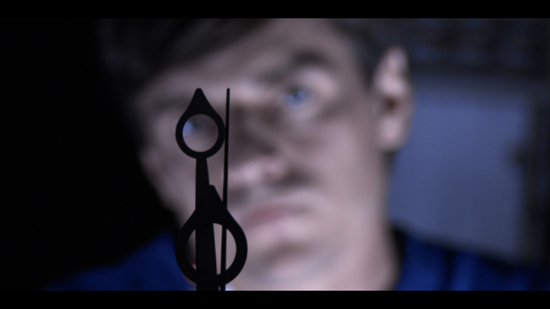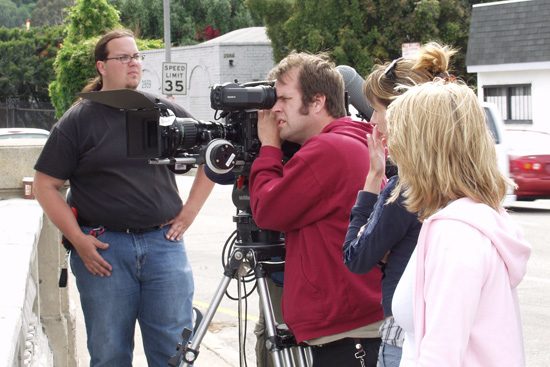Several weeks back, I joined Steve Wax of Campfire at the MIXX conference for a discussion about the potential of collaboration between Indies & Brands on feature films. Often conflicting agendas mess every thing up, but does it have to?
Our Proposition: Brands can associate themselves with films, particularly independent films, without relying on product placement or other forced connections. There are new ways both sides benefit from the marketing association offered in our new connected culture.
Ted: Product Placement has always been a bad phrase with filmmakers of all sorts, particularly indies. It can mean sacrificing their audience’s trust and their relationship with their fans. Whenever it’s proposed, filmmakers’ balk.
Steve: Many of us in the interactive marketing business never bought product placement either – we believe in transparency and authentic messaging. Instead, I’m interested in how certain brands and most independent films lean on strong cultural themes to attract attention from their respective audiences. By finding films whose themes and values line up with brands’, both can gain a marketing lift from a more authentic approach.
Ted: There are common themes that both filmmakers & brands return to time and time again:
1. Triumph over adversity; you can do it; (Juno, 21 Grams/Nike)
2. Family is where you find it; (Kids Are All Right/Benetton)
3. Difference is universal (The Help, Take Shelter, Weekend, Boys Don’t Cry/)
4. Tolerance/Forgiveness will teach us all; aka Open your heart (Precious, Bellflower, Wedding Banquet, Towelhead, /Coke];
5. Be yourself, Find Yourself, Don’t compromise your integrity (Napoleon Dynamite, American Splendor/Apple)
6. Take action; move on; just do it; don’t sit on the fence; make a tough choice; don’t wait until tomorrow. (Super, Erin Brokovich/*)
7. Don’t settle; Raise the bar; Aim higher; dream the dream; (Adventureland)
8. Build it and they will come; dream the dream; (Moneyball, Field Of Dreams)
9. Life is hard but our family & friends get us through it; (Martha Marcy May Marlene, The Savages, The Kid With The Bike)
10. Don’t mess with Mother Nature. (via
11. ”There’s hope, but it’s not where you think it is.” (via Mindi White)
12. “Love Hurts” (via @flixfixer). Love saves. Love transforms. (Eternal Sunshine)
13. “Revenge is all-consuming” (via @flixfixer) (The Skin I Live In, Pulp Fiction, Reservoir Dogs, Inglorius Bastards)
14. “Absolute power corrupts absolutely” (via @flixfixer)
*I stopped thinking of brands here – we really need to work with a brand to develop their positioning
Steve : Yes, more and more brands are utilizing cause related marketing campaigns. For instance, Pepsi Refresh (http://www.refresheverything.com/) and Tom’s Shoes (http://www.toms.com/our-movement ) are good examples. (BP and ecological responsibility may not be…)
Ted: The challenge is first how to spot the film if you are the brand, or how to spot the brand if you are the filmmaker – and then to do it far enough in advance so that both sides can utilize the relationship to truly grow their audience. Marketing of movies often only becomes audience facing the six weeks prior to release, but all the elements are in place two years prior to release. We have to change the practice for the world we are currently living in.
Steve: Well, what’s attractive here about the “Digital/Social Marketing” is the seeding of brand content is essential over time.
Independent films appeal to key audience segments by identifying serious issues, having embedded them in entertaining stories with strong characters. If the values associated with these same issues are essential to a brand strategy, they can be mutually discussed, debated and spread over time, supporting both the film release and the brand platform.
Let’s take Hallmark Cards as an example. They have a new line of cards for the unemployed. (http://perezhilton.com/2011-09-30-hallmark-launches-unemployment-sympathy-cards).
What if Hallmark created a campaign that highlighted unemployment and the dilemmas that result for the families? And the themed content behind the George Clooney film, Up In The Air, and shared that content — created by the brand — on behalf of the film? Might be a bit racy for Hallmark, but a campaign like this would certainly give them a lot of cred among people who are struggling.
Or, say, the theme of the new American family? The shared content was created and hosted by someone as large as McDonalds debating the makeup of the “new American family” and including the story of making of The Kids Are All Right? Some of the best and most popular American independents, Juno, Little Miss Sunshine, and Kids, focus on this same theme.
The brand would devote a significant amount of their marketing dollars to this effort, connecting with and supporting the film, gaining access to the films fans, and gaining greater authenticity.
Ted: If the filmmakers have not taken any financing they certainly can not be accused of compromising their integrity – which for some sometimes seems to be even more important than liking a good movie. But it’s still a good movie that drives most people, and certainly drives the audience. As much as I think good movies predominately come from whom the creators are, I do think the structure that creation occurs in, has a great deal to do with the quality of the product too. Artists need ownership of their work. We should consider what this structure’s content might be like.
Steve: Yes, who creates the new themed content and its honesty will be a big issue. A terrific example of a brand using a value theme in my opinion is the ongoing Responsibility Project from Liberty Mutual:
• Liberty Mutual’s TV ads emphasize responsibility and doing the right thing: http://tinyurl.com/42etyky,
• Meanwhile they maintain a site that talks about responsibility: http://responsibility-project.libertymutual.com/#fbid=p6WVZRiYX6D
• What if a new film like the Insider came out (http://www.imdb.com/title/tt0140352/) or again, Up in the Air, and had a campaign running that emphasized tough choices. And the content on the film’s issue site shared space with Liberty Mutuals? And the Liberty Mutual Responsibility site talked about the issues faced in the story by the Russell Crow character?
Ted: The challenges are that ideally that it can’t be just a one-off or a series of one-offs. Audiences need a place to return to, a place they can develop trust in, and ideally a place that can participate in. You can’t just build films any more.
To serve all the participants, you need to build a community. Both the filmmakers and the brands and the audiences will be involved in building what it becomes. You can unite them all around common themes & content silos. If the commitment to the brand is only a film or two, nobody will benefit.
You need a long term relationship, akin to what American Express has with Tribeca Film, but only not on a general basis but on a focused thematic. In some ways you had this long ago in television programming sponsorship like Mutual Of Omaha’s Wild Kingdom, but now since we can easily add the social aspect to it via the internet, it won’t be run top down but through the community itself. That ownership of the theme by the community allows it to resonate much more fully for both the filmmaker and the brand.
Steve: One of the best examples of ongoing support is Xerox roles in early role in top PBS programming. It would be really great to aggregate support this way for a slate of films. What’s essential is that a brand truly represent and support the theme. A filmmaker’s willingness to share the stage with a brand might be the ultimate test of mutual sincerity.
Ted: I think the demands that are made upon creators and their collaborators start to change under this paradigm, or at least the recommended “Best Practices” start to change. Filmmakers shift from a pure story-centered world to a greater focus on maintaining an ongoing conversation with their communities. It only makes common sense to adopt a strategy of both “audience aggregation” and one of “engagement”. You want not just fans, friends, and followers, but an active community that will proselytize for you.
Steve: Amen.
Ted: Seriously, right? If filmmakers and brands both declare what they want to represent openly and transparently – or even through gatekeepers & facilitators –- we are at the start of both a real collaboration and a new business model. There would be a hub by which audiences discover new work and then discuss and participate in the themes of that work. They transform from consumers to communities. The brand wins by enjoying the positive association with what truly matters to the community. The filmmakers win by having a new home for the discovery, appreciation, and presentation of their work – all important pillars in the cinema equation.
Note: We’ve looked at this possibility in the past on HopeForFilm. Check out Amy Lo’s post on “How Big Brand Sponsorship Saved Our Indie Film”





